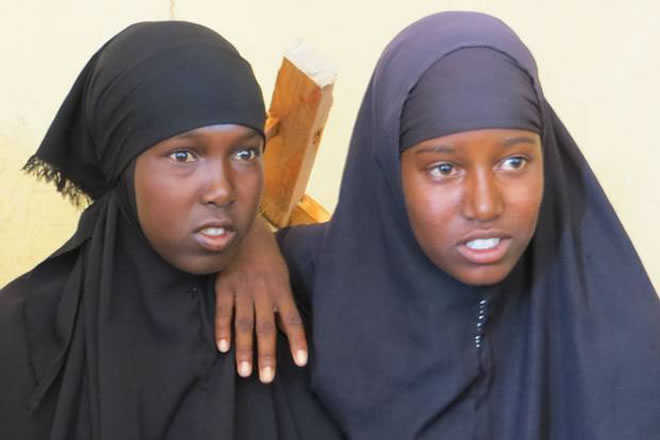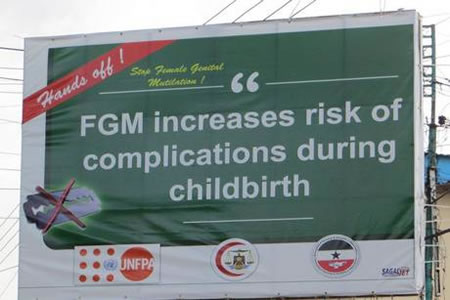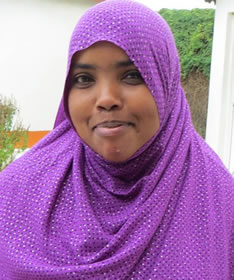
Taking a stand: victims Mariam Abdi, and Hoda Saleban, both 15

By Martin Bentham
Thursday, April 17, 2014
The poster over the main street in Boroma, Somaliland, has a simple warning emblazoned on it in bold print.
“FGM increases risk of complications during childbirth,” it tells passers-by, reinforcing the message with “Hands off!” and “Stop Female Genital Mutilation!”
Similar billboards, written in Somali, are outside the university and elsewhere in the centre of the busy town, close to the Ethiopian border. Their prominent location reflects the increasing intensity of a campaign to stop mutilation, after centuries in which the practice has been a central feature of cultural and religious beliefs.
Such beliefs mean FGM remains almost universal in Somaliland, with official estimates indicating that 98 per cent of women have had their genitals cut and sometimes sewn up as well
 |
Hands off: posters warning of the dangers of FGM have been erected in Boroma
Mutilation remains legal, and openly advocated by some as a protection for girls against promiscuity, social shame, and rejection by prospective husbands. Support for the practice was illustrated this month in another Somaliland town, when an anti-FGM poster identical to the one in Boroma was torn down by protesters after Friday prayers. They claimed its message was un-Islamic.
But attitudes are beginning to change. The government of Somaliland — an autonomous region of Somalia — is preparing a law to stop the worst forms of FGM. Its badge is on the poster. Religious leaders are starting to offer a new interpretation of Islamic law that prohibits sewing and reduces cutting.
Educational campaigns have been launched, teaching girls about their rights and the damaging health consequences of FGM. These are generating increasing opposition to mutilation among the younger generation.
 |
In the remote rural settlement of Xoorey, at a meeting with the charity World Vision, which is providing FGM awareness tuition, one schoolgirl after another spoke out against the practice and told of the trauma they suffered.
Hoda Saleban, 15, said she had undergone “sunna” FGM, involving removal of part of the clitoris — but now believed it was neither culturally nor religiously justified. “I was at home and my mother called a traditional birth attendant who did the sunna one,” she said. “But I will not do it. I remember the pain that I had that day and I don’t want my daughter to be circumcised that way.”
Mariam Abdi, also 15, said she was cut at six, but now knew about the health problems. These include a heightened risk of infections, difficulty during labour and potential for stillbirth, and fistula, a condition linked to FGM which causes incontinence. She added: “It was a bad culture and a bad practice before. It was like a kind of punishment. They did a bad thing to me and I don’t want to do that to my daughters. They were cutting part of the genitals. It is not good for health.”
Sainab Abdi, 11, suffered FGM aged five and said she did not agree that “cutting a part of a woman” was right.
But, in a sign of how dfficult it is to change attitudes, 12-year-old Nimco Ahmed said she still believed in mutilation, despite giving a vivid account of the trauma she faced: “I was eight years old. It was not only me: there were another three girls. My mother called a traditional birth attendant. Then my mother and some other women were holding my shoulders and legs.
“I was feeling afraid and it was very painful. She was using the blades and it took about 30 minutes. They tied my legs together after they did it. I was in bed for three days. I was in pain.













